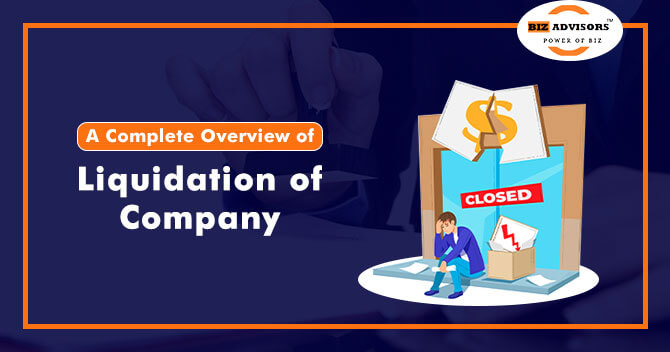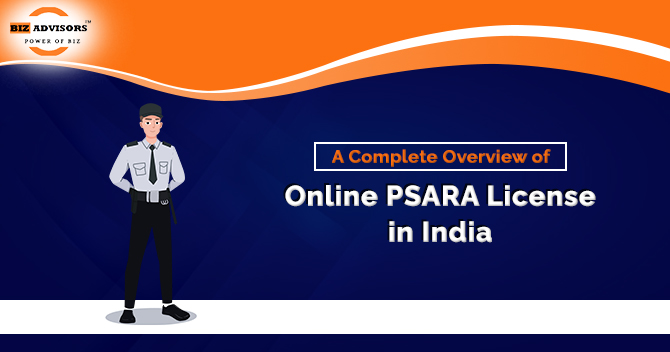Liquidation of the Company comprehensively prepares a regulatory framework for winding up the corporation’s functions due to insolvency or inability to regulate the company’s activities further. It must be explicit in the context of the Liquidation of a Company that the procedural formalities and regulations for the same must be adhered to according to the Companies Act, 2013 under the wide ambit of the law. It substantially forms a major part of underlining the concept that the structural framework of the Company’s intrinsic governance is not analogous to the ideal pattern of law. Liquidation of the Company trivializes the significance of the corporation’s integrity in establishing an efficacious model of enterprise on a broad scale. It provides a distorted picturesque of business management and also demoralizes the emerging industries in the regulation of the corporate sector. In this blog post, you will learn about the rudimentary nuances and legalese concerning the Liquidation of the Company in a detailed format.
Liquidation of the Company
The process of liquidating a company is intricate and necessitates a thorough awareness of numerous factors. The procedure doesn’t begin to function until after a thorough review of all the possible causes. Let’s investigate it further.
This liquidation process is started when a firm with excessive debt is no longer able to function. The goal is to close down business activities and sell the company’s assets to pay off all liabilities and, if any other commitments exist, fulfill them as well. The determination that the company is no longer in a position to produce profits determines whether liquidation is confirmed.
Insolvency, which is the reluctance or inability to continue operations in a lucrative manner, etc., is the most common reason for a company’s liquidation, though there may be other causes as well.
Forms of Liquidation
There are three different kinds of liquidation processes:
Voluntary Liquidation: With voluntary liquidation, the company’s owners voluntarily opt to end operations rather than having to go through the insolvency procedure. The corporation has the option to repay its creditors during voluntary liquidation.
Creditor’s Voluntary Liquidation: When the directors or shareholders of the firm suspect that the company may be in default on its creditors, they start this sort of liquidation. The business will settle all of its debts and avoid participating in a court-ordered insolvency procedure.
Compulsory Liquidation: If a corporation is unable to pay its debts, the court or other adjudicating body may order that it cease all business operations and be liquidated.
Essential Documentation concerning the Liquidation of the Company
For the Liquidation of the Company, the following documents are necessary:
· Company’s bank account statements
· For the business, a PAN card
· A directors’ indemnity bond that they have signed
· Financial Reports for the Business
· All Assets and Liabilities Documents for Board Member Approval of Resolution Documents examined by a Chartered Accountant (if Applicable)
· Any additional pertinent papers about the company, such as a NOC from the income tax division.
Procedure concerning the Liquidation of the Company
The following is the procedure concerning the Liquidation of the Company:
Procedure for Compulsory Liquidation
· Application to the tribunal: Either the financial creditors or the operational creditors may apply for insolvency. To make sure the business starts the corporate insolvency resolution process, this is done. The applicant must make sure that the default amount is greater than 1 Lakhs rupees.
· The appointment of an interim insolvency resolution professional (IRP) will take place once the tribunal has accepted the application. The IRP will take over the company’s management.
· Clampdown period: Following the appointment of the IRP, the company will be subject to a moratorium, which requires that all business activity cease. There cannot be a transfer of commodities, services, or assets. This will go on as long as the entire corporate insolvency resolution is not finished.
· Verification of claims: Within 30 days, the interim resolution specialist is required to review and investigate each claim submitted by a creditor. He is then required to compile a list of these claims and provide it to the committee of creditors.
· The expert in resolution: The committee of creditors has the option of appointing a new resolution professional or sticking with the interim resolution professional.
· Resolution plan: A resolution plan will be created by the resolution specialist, outlining the terms under which each creditor will be reimbursed. The creditors’ committee has 180 days to adopt this scheme.
· NCLT approval is required before the resolution plan may be implemented. After receiving NCLT approval, the resolution specialist has one year to complete all formalities and obtain all relevant licenses.
Company liquidation: If the aforementioned procedures are followed, the NCLT must approve the company’s liquidation and make its debtors whole.
Procedure for Voluntary Liquidation Declaration
· The directors of the firm must certify in an affidavit that the company is solvent. The company’s affidavit must state that it has not defaulted in any way, that this action is not being taken to mislead anyone, and that it is capable of paying its creditors.
· The Board of Directors meeting: The approval of the liquidation procedure is the responsibility of the directors. They must choose a liquidator and draught a statement outlining the circumstances leading to the liquidation for the general meeting.
· Shareholders’ general meeting: After the declaration of solvency, the general meeting must be held within four weeks. Both the choice to appoint a liquidator and the approval of the company’s liquidation must be made by special resolution.
· Responsibility of Liquidator: To solicit claims from diverse stakeholders, the Liquidator will publish a notice detailing the company’s winding up in an English and regional newspaper. After that, the liquidator will evaluate and compile the list of all claims. To ensure that all stakeholders are compensated, the liquidator must realize all of the assets.
· The company’s liquidation: Within a year of the process of liquidation beginning, the corporation must be completely liquidated. The liquidator is required to draught a final report outlining every aspect of the settlements. The company’s registrar and IBBI must receive this report.
· Submission to NCLT: After completing the aforementioned requirements, a request for the company’s dissolution must be submitted to the NCLT. The corporation will no longer be able to conduct business as of the date the NCLT issues an order dissolving it.
Conclusion
Liquidation of the Company emphatically alters the social identity of the corporation on a wide platform. It provides instantaneous succor in analyzing the fact that the corporation is incompetent to perform its functions further or has opted for insolvency due to some intrinsic reasons in the context of the lack of effective operational management of the corporation. Therefore, every firm which wants to liquidate its corporation must be aware of all the essential steps and regulations for the same under the Companies Act, 2013[1]. Our legal luminaries at BizAdvisors.io provide a robust support system in the context of assisting individuals to easily get access to the ideal structural framework of the Liquidation of the Company. You can freely contact our legal consultants at BizAdvisors.io for any kind of professional assistance or help in the context of the Liquidation of the Company.
Read our article:A Complete Overview of Winding up a Private Limited Company
 9559179325
9559179325 9559179325
9559179325





